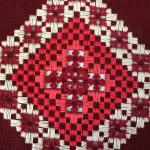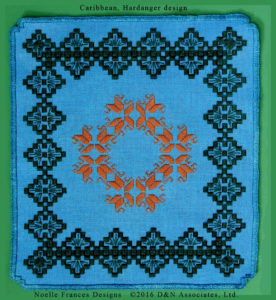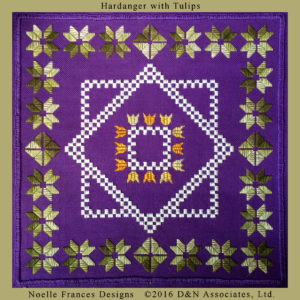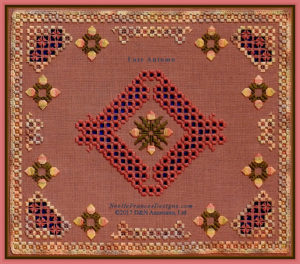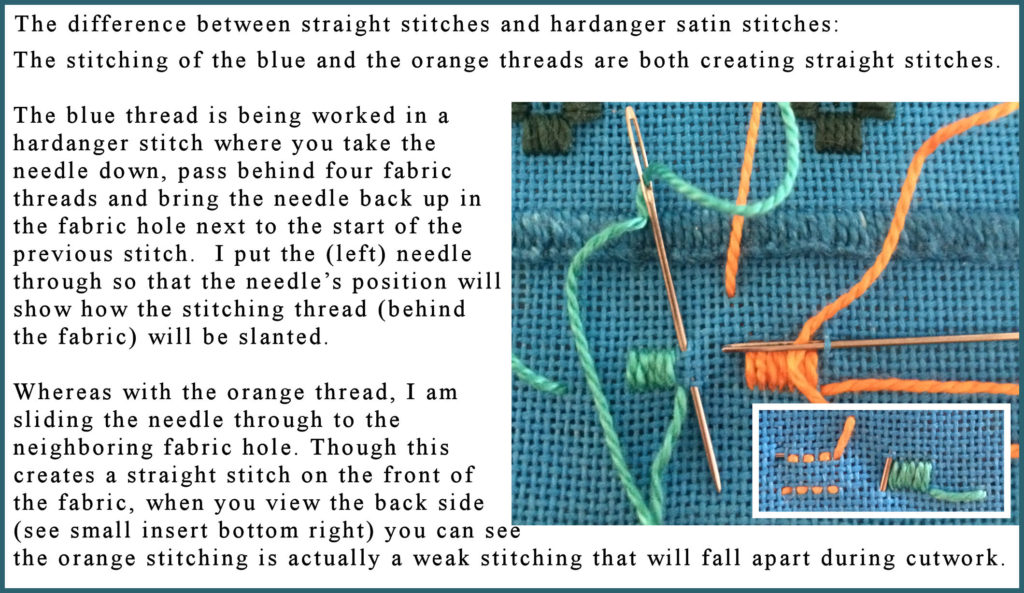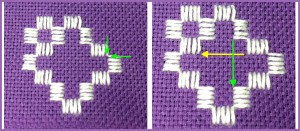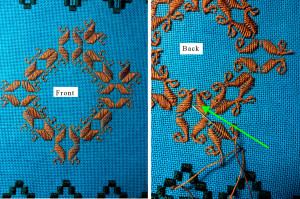|
Traditional hardanger embroidery is characterized by hardanger satin stitch blocks (kloster blocks) and hardanger satin stitches formed into geometric designs. Within the kloster blocks the cutting and withdrawal of threads creates grid(s) of fabric threads which normally are embellished with needle weaving and filling stitches. In order to be a kloster block: In order to be a kloster block for openwork each side has a mirror-image opposite side. |
| Samples of designs with kloster blocks: |
| Below are steps for stitching four-sided and twelve-sided kloster blocks. Viewing these below photos you may notice that the stitching thread seems looser than it should. On a 22 count fabric I would normally use a size 5 stitching thread for kloster blocks but for these photos I decided to use a size 8. This is so you can view (I think easier) which fabric holes are shared and which are not. Note: When two sides of a kloster block meet to form a corner they share a common fabric hole at the corner. |
|
Adjoining a 12-sided kloster area to the 4-sided kloster block created above.
|
As you work check your positional alignment.
- Make sure adjoining kloster sides are perpendicular to each other and share a corner fabric hole (see the two neon green arrows on the left photo).
- Behind the fabric (right photo) no stitching thread crosses over an open (unworked) area (such as where the yellow arrow crosses the green arrow
- Stitching thread that needs to be carry is weaved through the back side stitching of previous worked sides.

